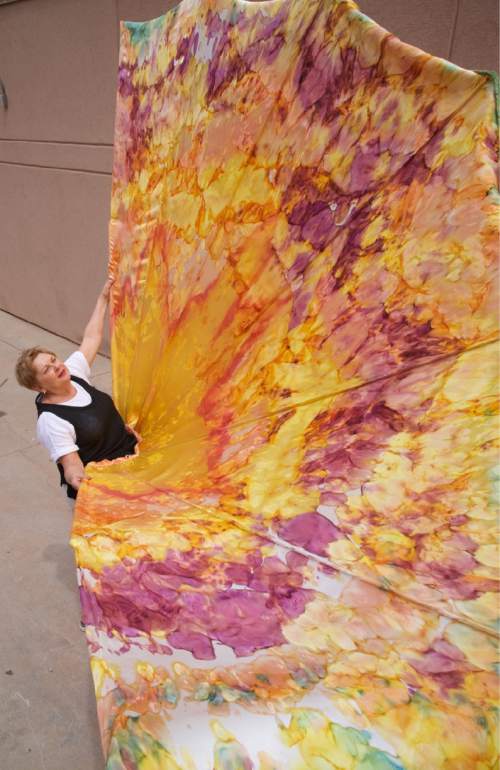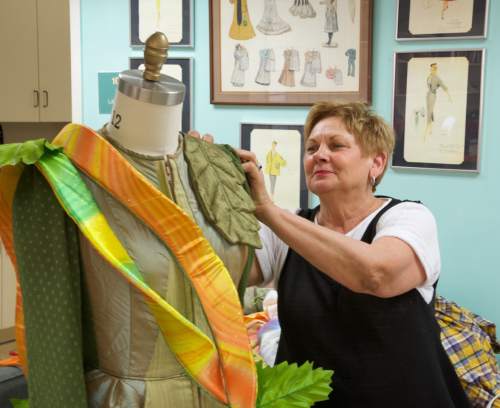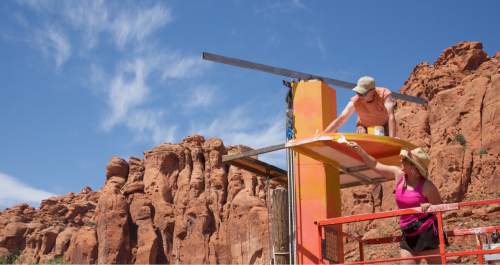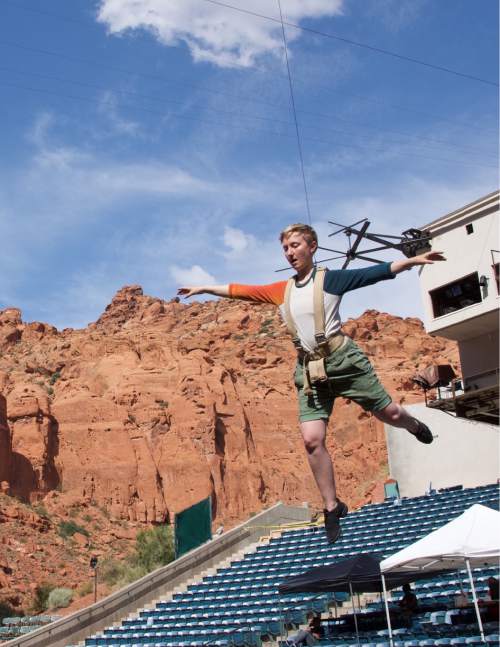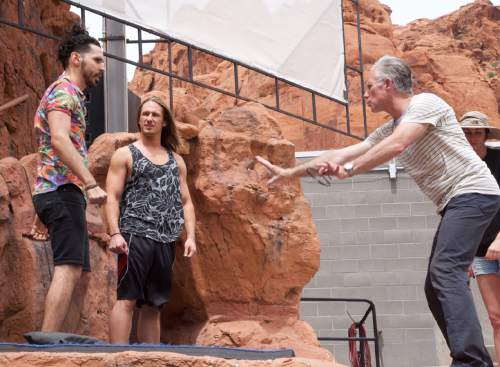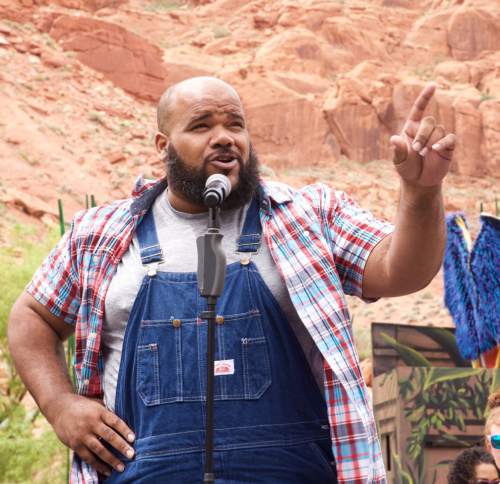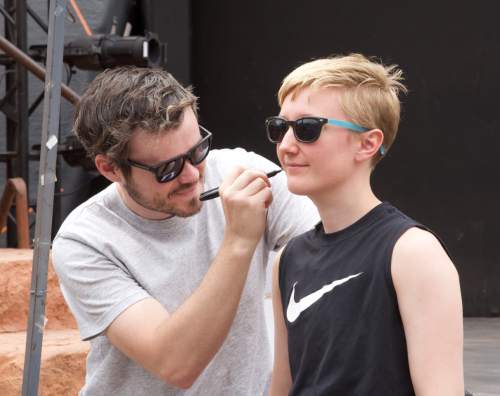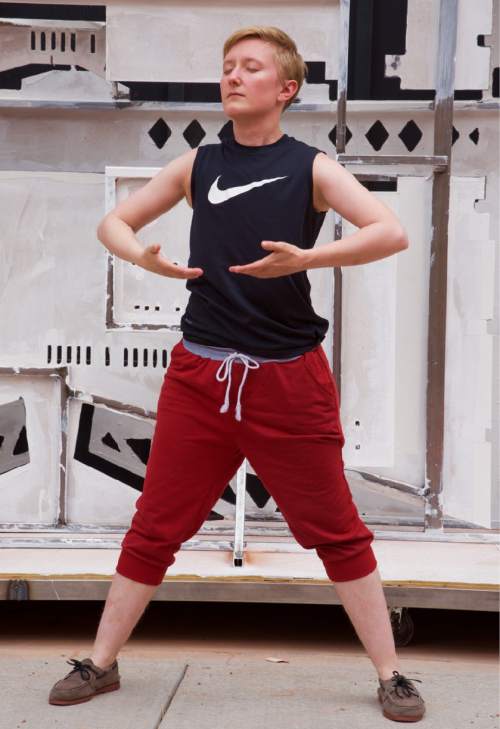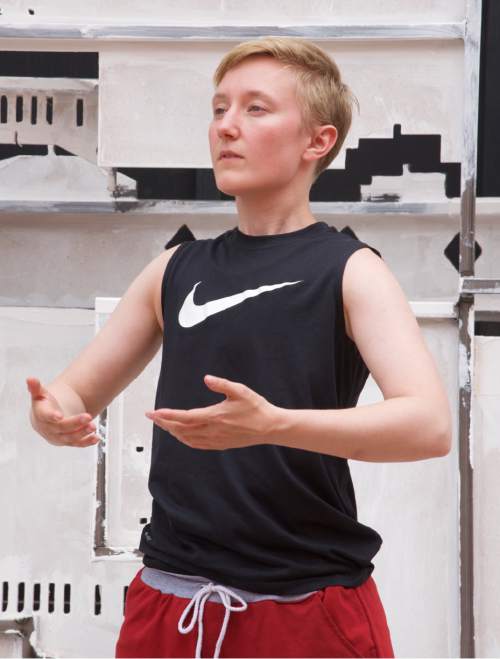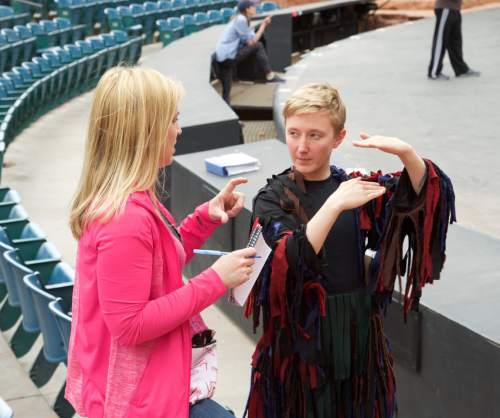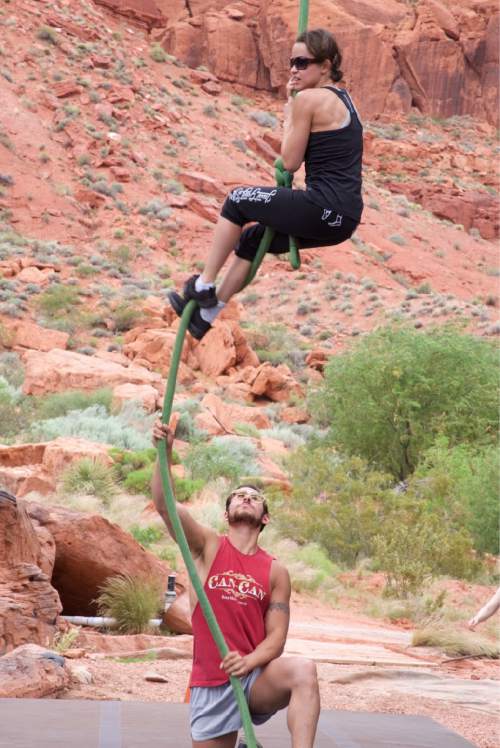This is an archived article that was published on sltrib.com in 2016, and information in the article may be outdated. It is provided only for personal research purposes and may not be reprinted.
Ivins • Tuacahn's scenic outdoor stage at the base of a southern Utah redrock cliff offers directors a chance to perform all sorts of theater magic not available in more traditional indoor venues.
Summer shows often feature fireworks, flying actors, live animals, waterfalls, fountains and a variety of other special effects.
But there are tradeoffs. Summer temperatures in St. George reach triple digits most days. The occasional monsoon wind can pay havoc with sets and prevent actors from flying. The thermometer can rise into the 120s on the hot black stage during rehearsals.
"I am pale and burn very easily," said Em Grosland, who plays Peter Pan in Tuacahn's opener this season. "I put on 100 SPF sunscreen. I am drinking more water than I ever have, including electrolytes and Gatorade."
The challenge for actors, directors and costume designers is to keep performers and audience safe and hydrated. Contingency plans must be drawn up.
At a performance of "Hairspray" a few years ago, for example, a big wind hit the amphitheater in the middle of the performance. The show needed to be stopped so technicians could quickly take down parts of the set. Two actors did a memorable impromptu standup act, wondering aloud if there wasn't a town named Hurricane nearby.
According to veteran Tuacahn artistic director Scott Anderson, two of this year's big shows — "Peter Pan" and "Tarzan" — are among the most complicated the company has ever mounted.
"There is lots of fighting, dancing and flying," he said. "As a spectacle, these are two of the biggest shows we've ever mounted at one time together here. They have taken a lot of time."
Actors, directors and costume designers deal with the challenging elements in many ways. Most of the tricks are out of sight of the audience.
Shows, for example, usually begin at the later-than-normal hour of 8:45. That allows for the temperatures to fall but also for lighting and special effects to be more effective.
Anderson said big fans were put in above the audience a year ago that reduce the temperature for playgoers and actors by 8 to 10 degrees. The technology is such that they make no sound.
In "Peter Pan," Grosland said that during a scene where he hides in a doghouse, there is a water bottle hidden inside. Water bottles are hidden all over the set so actors who sing can keep their vocal cords from drying out and avoid dehydration.
Costume designs are also a major challenge.
Wilma Mickler, who has been the costume designer and shop manager for nine years at Tuacahn, said the most important thing in designing a costume is for it to breathe. That means using cotton or silk instead of polyester, which can trap the heat.
Leads who wear elaborate costumes, like Aloysius Gigl, who is playing Captain Hook in "Peter Pan," are also fitted with ice vests. Gigl's costume includes gem stones, rope and elements that make it heavier.
"I've never done an outdoor performance before," Gigl said. "It's pretty brutal. I am not a fan of heat to begin with. … Captain Hook wears a lot of heavy period clothing, a big wig and a hat. I am hoping the gods will be kind and I won't pass out onstage."
Mickler said costumes for each play can be challenging in their own way.
"That's why I like what I do," she said.
The play that provided her with the biggest challenge was the production several years ago of "Les Misérables," because it required heavy costumes with quick changes that required layering."
"This year, there are a lot of really oversize flowers for the scene that are man-eating plants that eat Jane [in 'Tarzan']," said Mickler. "They will be a challenge. I need to make costumes they can move in in the size and volume the director wants."
Flying can also be a challenge for actors.
"I've done it twice in a small theater where I was only 5 feet off the ground," said Grosland, who as Peter Pan will be flying all over the outdoor theater, conditions permitting. "This is a larger space. I am doing a lot of flying that is much higher. Flying outside is something more magical. … The sky and stars are above you. … There are certain things you can't do when it is really windy. So we prepare other options for Tarzan and Peter Pan."
Bill Burns, who is directing and choreographing "Tarzan" this year after performing similar duties at Tuacahn last year for "Beauty and the Beast," saw most of the elements a year ago.
"We had weather with heat or the wind here with the canyon," he said. "We can continue to perform through the rain, though the wind and heavy rains affect flying. The technicians and lighting crews have to come down in a lightning storm. Every 10 minutes, something can change. We might have to pause and bring down the lighting crew, or abort a flying moment. We always have a plan B, C or D to figure out to continue the storytelling."
Burns said Tuacahn audiences are known for being tough as well. He has seen people sit through rain, light snow and wind. At one rainy performance, many in the audience put on garbage bags to repel the wetness and enjoyed the show.
"We warn actors who aren't familiar with the desert to hydrate, hydrate, hydrate," said Burns. "You don't want them to dry out the voice. We are careful with rehearsals and use canopies and umbrellas or go indoors with air conditioning."
There are also huge turbine windmills on each side of the stage that can be turned on when the heat is a factor.
All of these precautions and planning are often not obvious to those who come to enjoy the musical. While Tuacahn's outdoor setting can be magical, it can also be challenging. Preparation and mitigation allow the show to go on.
Summer at Tuacahn
Tuacahn's summer season includes "Peter Pan," Tarzan" and "The Hunchback of Notre Dame" through mid-October.
Where • Tuacahn Amphitheatre,1100 N. Tuacahn Drive, Ivins
Tickets • 1-800-746-9882 or tuacahn.org




